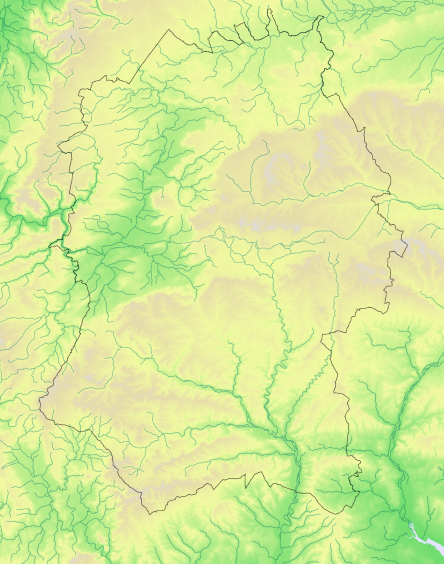Tufted Duck Aythya fuligula
Winter distribution 1995–2000
Common resident and winter visitor from Iceland/north Europe
Atlas species lists
- Breeding distribution 1995–2000
- Summer abundance 1995–2000
- Winter distribution 1995–2000
- Winter abundance 1995–2000
- Breeding distribution 2007–2012
- Summer abundance 2007–2012
- Winter distribution 2007–2012
- Winter abundance 2007–2012
- Breeding distribution change
- Summer abundance change
- Winter distribution change
- Winter abundance change
More Tufted Duck maps
- Breeding distribution 1995–2000
- Summer abundance 1995–2000
- Winter distribution 1995–2000
- Winter abundance 1995–2000
- Breeding distribution 2007–2012
- Summer abundance 2007–2012
- Winter distribution 2007–2012
- Winter abundance 2007–2012
- Breeding distribution change
- Summer abundance change
- Winter distribution change
- Winter abundance change
Map explanation
This map shows the winter distribution of the species in Wiltshire as revealed by the fieldwork for Birds of Wiltshire (Wiltshire Ornithological Society 2007).
Key
Status
Nos tetrads

Present
29
7%

Not surveyed
Tufted Ducks breed across Eurasia between 50° and 70° N, though they have only become common in west and north-west Europe since the late 19th century. First recorded breeding in Great Britain in the 1850s, by the time of the 1988-91 Atlas the national breeding population was estimated at between 7000 and 8000 pairs. Their breeding range increased by 33% between the 1968-72 Atlas and Bird Atlas 2007-2011.
The first breeding record in Wiltshire was in 1926 at Wilton Water. Thereafter numbers steadily increased until by the time of Birds of Wiltshire the estimated nesting population in the county was 150-300 pairs. Between Birds of Wiltshire and Bird Atlas 2007-2011 there was a slight contraction in the breeding season distribution, from 140 occupied tetrads to 134, though the number of tetrads where breeding was probable or confirmed increased by 66%, from 58 to 96, indicating a breeding population of possibly 250-500 pairs.
Tufted Ducks are highly migratory in winter – those that breed in southern Great Britain are believed to form one of the few resident populations in the species’s entire range. The British winter population is augmented by migrants mostly from Iceland, Fenno-Scandia and north European Russia.
The Wiltshire winter population was thought not to exceed 1000 during the 1950s and 1960s, except in particularly severe winters such as 1962-3. Extrapolations from the winter tetrad counts for Birds of Wiltshire also pointed to a population total of 1000, suggesting little change in winter numbers between 1960 and 2000. There has however been a significant winter distribution range expansion in the past decade: whereas Birds of Wiltshire recorded the species in only 12 core 10km squares, Bird Atlas 2007-2011 recorded them in 27 core squares.
References
The following references are used throughout these species accounts, in the abbreviated form given in quotation marks:
“1968-72 Breeding Atlas” – Sharrack, J.T.R. 1976: The Atlas of Breeding Birds in Britain and Ireland. T. & A. Poyser
“1981-84 Winter Atlas” – Lack, P.C. 1986: The Atlas of Wintering Birds in Britain and Ireland. T. & A. Poyser
“1988-91 Breeding Atlas” – Gibbons, D.W., Reid, J.B. & Chapman, R.A. 1993: The New Atlas of Breeding Birds in Britain and Ireland 1988-91. T. & A. Poyser
“Birds of Wiltshire” – Ferguson-Lees, I.J. et al. 2007 : Birds of Wiltshire, published by the tetrad atlas group of the Wiltshire Ornithological Society after mapping fieldwork 1995-2000. Wiltshire Ornithological Society.
“Bird Atlas 2007-2011” – Balmer, D.E., Gillings, S., Caffrey, B.J., Swann, R.L., Downie, I.S. and Fuller, R.J. 2013: Bird Atlas 2007-2011: the Breeding and Wintering Birds of Britain and Ireland
“WTA2” – ("Wiltshire Tetrad Atlas 2 ") the present electronic publication, bringing together the Wiltshire data from “Birds of Wiltshire” and “Bird Atlas 2007-11”, together with data from further fieldwork carried out in 2011 and 2012.
"Hobby" - the annual bird report of the Wiltshire Ornithological Society.

